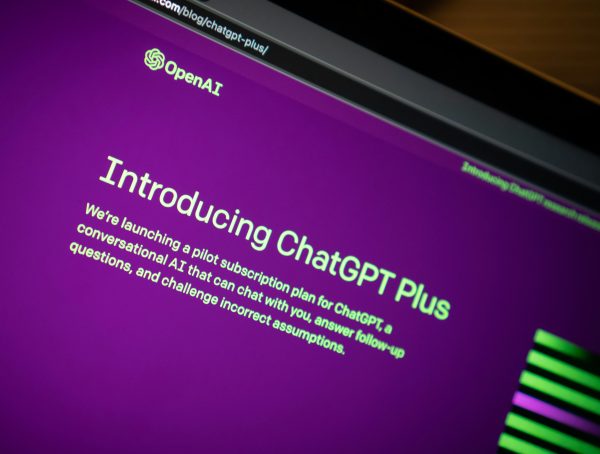I recently attended the IMAG Conference in Boston, hosted by MPA: The Association of Magazine Media. It was an absolutely eye-opening experience and wonderfully informative. While there, I had the pleasure of speaking with Joe Landry, a 25-year veteran in the magazine media business and who is now executive vice president of Pride Media. With magazines as notable as The Advocate, Out and Plus under his belt, I can’t tell you how excited I was to learn about a new print title, Chill, that Pride Media is publishing.
According to Joe, Chill is geared toward LGBT people who dislikes labels such as “gay” attached to their persona. The magazine is aimed at African-American and Hispanic millennial men who are more about the person than the stereotype. It’s an exciting concept that opens up an entirely new spectrum of possibilities for the LGBTQ individual.
Joe also touched on the relaunch of Out Traveler and a new content studio coming up in November called “Black Cat” in honor of The Advocate’s beginning after the Black Cat Riots in the 1960s. It was a great interview and one that I think you will thoroughly enjoy.
And now without further ado, here are the sound bites from the Mr. Magazine™ interview with Landry. Click here for the full interview.
On Chill: There’s a movement underfoot in the millennial audience where some folks do not want to subscribe to the label “gay.” And the archetype for gay, for the younger generation, is kind of this white, buffed, affluent male. And we were losing out on attracting this younger audience, so we came up with the title Chill, which is geared toward African-Americans and Hispanics, mostly millennial men, who don’t subscribe to labels.
On whether he sees Chill as a line extension of the other titles beneath Pride Media’s umbrella or as a new niche: It’s definitely a new niche. I mean, 80 percent of the staff that creates Chill is African American or Latino. So, it’s a different point of view that we are working with, both on the editorial side from a content perspective, and also on the advertising and marketing side. We are now going after African-American and Latino dollars that we didn’t have access to before, typically from some of the same people that we’ve been talking to who had diversity at various companies.
On whether he feels they are now doubling the diversity and making the gay community even more of a minority: No, I don’t see it that way at all. I see it as creating content that’s relevant to a consumer segment that we didn’t have access to before. So, how Procter & Gamble would view it, I don’t know. I haven’t had a conversation with Procter & Gamble about double minorities, but there are diversity agencies that specialize in black and Latinos. They might have a subset of LGBT, and it’s still viewed as LGBT, even though it’s not screaming out on the cover, while also hitting the Latino and African-American audiences as well.
On why he decided Chill should be a print magazine: We specialize in print. Our core history is in print. We have The Advocate, Out, Plus. And The Advocate turned 50 last year. Out turned 25 and Plus is turning 20 this year; we’re having the 20th anniversary of Plus. So, we have a long history in print publications. And there’s also more credibility in print. If we just launched a website, I don’t know how we make an impact within that space the way we can in print.
On the biggest challenge he thinks he’ll face in 2019 and beyond: It’s interesting that we’re having this conversation right now in the middle of June, because June is Pride month and it is our most successful month from an advertising revenue perspective in the history of the company, which is crazy. And we’re diversifying our offerings into creating assets for marketers.
On how he would define content today: Creating assets, whether it’s in print, in video, in social, or experiential, that are relevant to our audience. So, that’s the broad definition of content. And editorial is, of course, the most important area of creating content, but we’re also doing it on the marketing side with our partners. And a lot of our content is amplified through social influencers, so that’s another component to a lot of the programs that we do now. Not only do we create custom content, but we have the talent that we hire to create the custom content share the content on their own social platforms.
On whether he feels more at ease about the future of print today than he did five years ago: No. I am never at ease. (Laughs) I am confident in the company. I am confident in our assets and I am confident that we will continue to deliver relevant messaging for our audiences, both from an editorial perspective and from an advertising perspective across platforms. But I’m sort of platform agnostic, I mean, I love magazines because that’s where I come from, but it’s really about where does the consumer want the content and the information. And that’s where I’m going to deliver it. So, I’m not beholden to any one platform.
On what he would have tattooed upon his brain that would be there forever and no one could ever forget about him: Advocate.
Samir Husni, aka Mr. Magazine™, is the director of the Magazine Innovation Center at the University of Mississippi, School of Journalism and New Media. He is also professor and Hederman Lecturer at the School of Journalism. Recognized as the nation’s top authority on magazines, Husni has been interviewed by media worldwide and has produced the annual Samir Husni’s Guide to New Magazines since 1986. His blog at mrmagazine.me, which is where this interview appeared, features regular Q&As with the leading figures in the publishing world.








